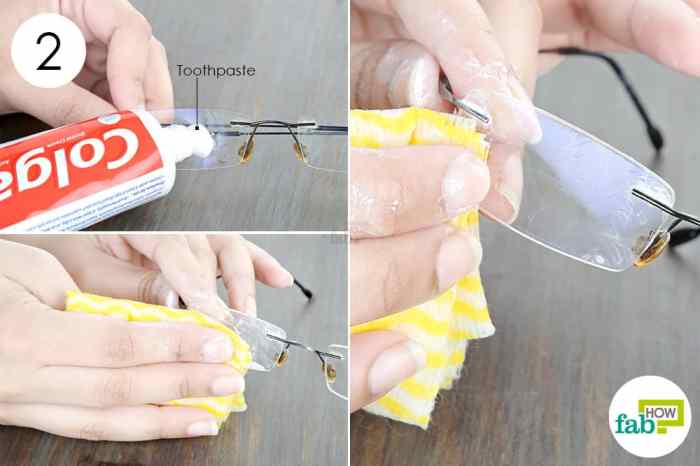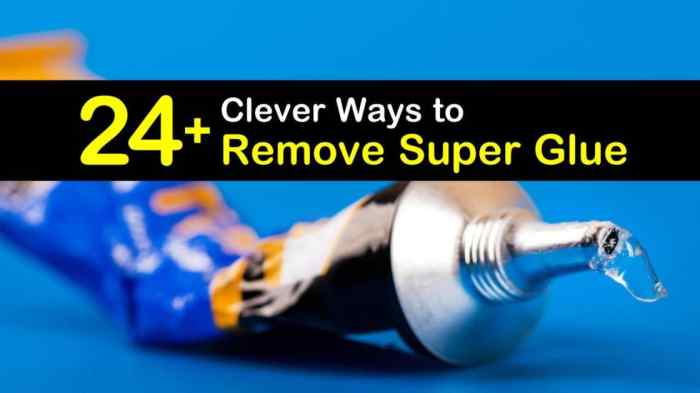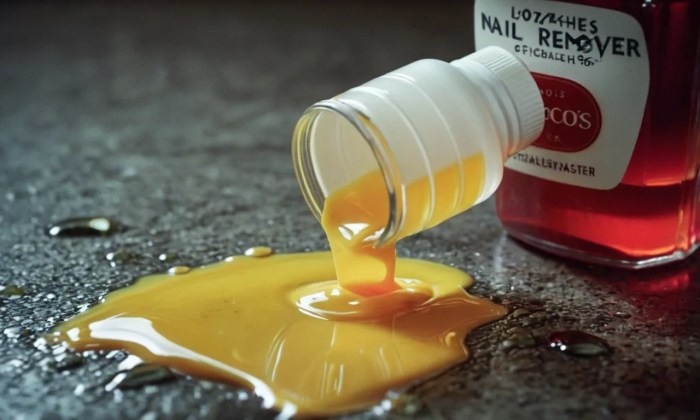Can Nail Polish Remover Remove Super Glue?
Can Nail Polish Remover Remove Super Glue?
Can nail polish remover remove super glue – Super glue, a ubiquitous adhesive, can sometimes find its way into unwanted places. Acetone-based nail polish remover, a common household item, is often suggested as a potential solution for removing this tenacious adhesive. This article explores the chemical interactions between nail polish remover and super glue, examining the effectiveness of this method and outlining important safety considerations.
Nail Polish Remover Composition and Properties
Acetone-based nail polish removers primarily consist of acetone, a volatile organic compound, along with various additives such as emollients and fragrances. Acetone’s effectiveness stems from its strong solvent properties, its ability to dissolve a wide range of substances due to its polar nature and ability to readily break intermolecular forces. Compared to other common solvents like ethanol or isopropyl alcohol, acetone possesses significantly higher dissolving power for many polymers, including some types of cyanoacrylate, the main component of super glue.
However, using acetone carries inherent risks including flammability, skin irritation, and inhalation hazards. Prolonged or repeated exposure should be avoided.
Super Glue Composition and Properties

Source: fabhow.com
Cyanoacrylate-based super glues are primarily composed of alkyl cyanoacrylates, which are esters of cyanoacetic acid. These monomers rapidly polymerize, or bond together, upon contact with moisture or certain catalysts present on most surfaces. This polymerization forms strong bonds through a complex process involving the interaction of the cyanoacrylate molecules with hydroxyl groups on the surface, creating a strong, durable bond.
The speed of curing significantly impacts the ease of removal; fresh, uncured glue is far more susceptible to dissolution than fully cured glue.
Interaction Between Nail Polish Remover and Super Glue
Acetone’s ability to dissolve super glue hinges on its interaction with the cyanoacrylate polymers. Acetone can disrupt the intermolecular forces holding the polymer chains together, allowing for the gradual dissolution of the glue. The effectiveness varies depending on the type of cyanoacrylate used in the super glue, the age of the bond (fresh vs. cured), and the surface material.
In cases where the super glue is relatively fresh and the surface is non-porous, acetone may be successful in dissolving and removing the adhesive. For instance, removing fresh super glue from a smooth, non-porous surface like glass often yields positive results.
Methods for Removing Super Glue with Nail Polish Remover

Source: tipsbulletin.com
Attempting to remove super glue with nail polish remover should be done cautiously and with appropriate safety measures. The process involves carefully applying the remover to the affected area, allowing it to penetrate the glue, and gently removing the softened adhesive with a cotton swab or other suitable tool. Always ensure adequate ventilation and avoid contact with eyes or skin.
| Method | Material | Time | Effectiveness |
|---|---|---|---|
| Acetone Application (Cotton Swab) | Fresh Super Glue on Glass | 5-10 minutes | High |
| Acetone Application (Cotton Swab) | Cured Super Glue on Wood | 30+ minutes | Low to Moderate |
If nail polish remover proves ineffective, alternative methods include using isopropyl alcohol, commercial super glue removers, or even freezing the glue to make it more brittle for easier removal. Always test any removal method on an inconspicuous area first to assess potential damage to the surface.
Applying nail polish remover requires a gentle, controlled approach. Saturate a cotton swab or cloth with the remover and apply it to the glue, avoiding excessive rubbing or scrubbing, which could damage the underlying surface. Allow sufficient time for the acetone to penetrate and soften the glue before attempting to remove it.
Factors Affecting Removal Success
Several factors influence the success rate of removing super glue with nail polish remover. The type of super glue, the material of the surface to which it is applied, and the amount of time elapsed since application all play crucial roles. Porous surfaces tend to absorb the glue more deeply, making removal more challenging. Similarly, larger amounts of super glue require longer exposure times to the remover.
Materials like wood or fabrics are more susceptible to damage during the removal process than glass or plastic.
Safety Precautions and Alternatives, Can nail polish remover remove super glue

Source: vampy-varnish.com
When using acetone-based nail polish remover, always work in a well-ventilated area to avoid inhaling fumes. Wear gloves to protect your skin and avoid contact with eyes. In case of accidental eye contact, immediately flush with copious amounts of water and seek medical attention. If acetone comes into contact with open wounds, wash the area thoroughly with soap and water.
- Isopropyl alcohol
- Commercial super glue removers
- Freezing the glue
- Mechanical removal (carefully scraping)
A visual representation of proper handling would show a person wearing gloves, working in a well-ventilated area, and carefully disposing of used nail polish remover in a sealed container according to local regulations. The image would emphasize the importance of avoiding contact with eyes and skin and properly labeling the disposal container. The container should be clearly marked with appropriate hazard warnings.
Q&A: Can Nail Polish Remover Remove Super Glue
Is it safe to use nail polish remover near my eyes?
No, avoid contact with eyes. Acetone is irritating and can cause damage. Use in a well-ventilated area.
What if the nail polish remover doesn’t work?
Try alternative methods like isopropyl alcohol, commercial super glue removers, or even freezing the glue.
Can I use nail polish remover on all surfaces?
No, test on an inconspicuous area first. Acetone can damage certain materials like plastics or painted surfaces.
How do I dispose of used nail polish remover properly?
While nail polish remover, specifically acetone-based ones, can sometimes soften super glue, its effectiveness varies. The strong solvents might even damage certain surfaces. Interestingly, the vibrant color of a blue black nail polish could potentially be affected by accidental contact with super glue, highlighting the need for careful application of both products. Therefore, using nail polish remover on super glue should be approached cautiously.
Check local regulations. Generally, it should be disposed of as hazardous waste, not poured down the drain.
















